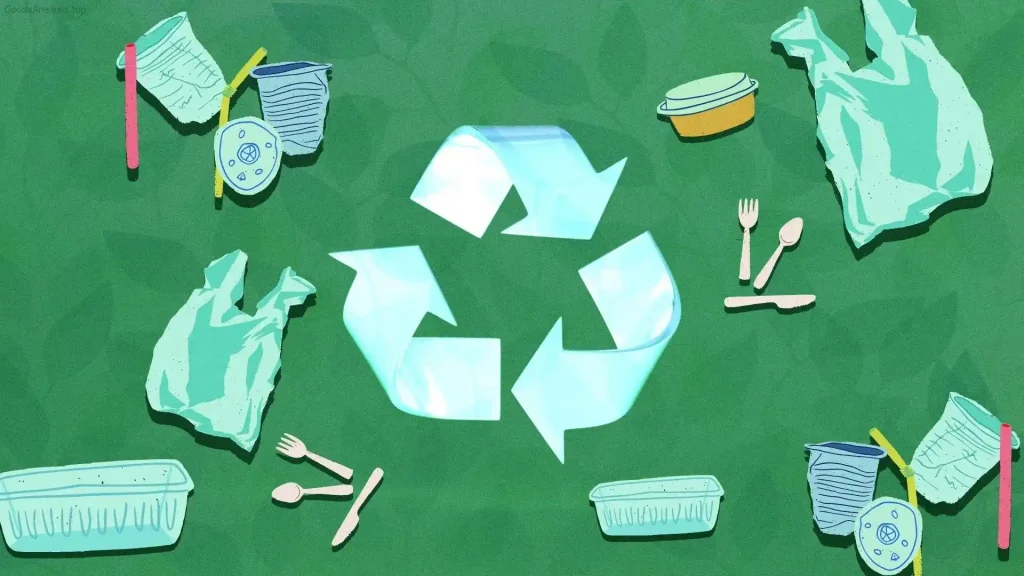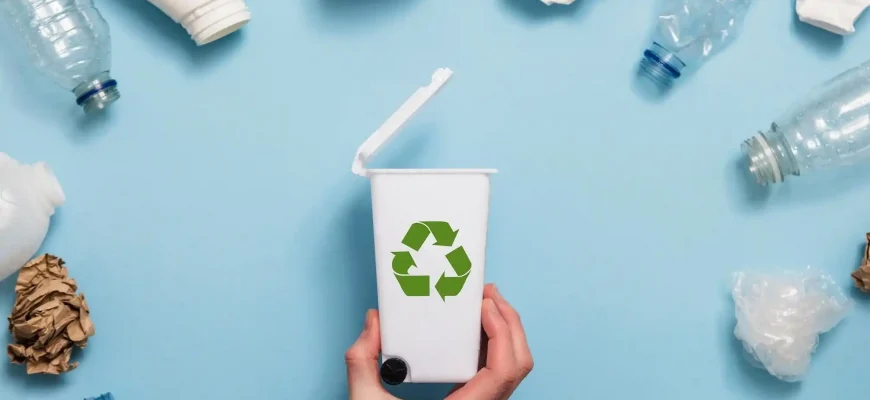In a world where plastic has become ubiquitous, reducing its use can feel like a monumental task. From the packaging that wraps our food to the plastic bottles that hold our water, it’s easy to overlook how deeply plastic has infiltrated our daily lives. However, this relentless tide of plastic waste is wreaking havoc on our planet—polluting oceans, harming wildlife, and contributing to a growing waste crisis. But don’t worry, it’s not all doom and gloom. There are many practical and simple ways that you can start reducing plastic use, and the more people who take action, the bigger the impact we can collectively have.
In this article, I’ll explore the key ways to reduce plastic usage, highlighting why it’s important, how you can do it, and, yes, even the challenges that come with it. I’m speaking from experience as someone who has spent years studying and observing environmental and social trends. And don’t worry—I’ll make sure to provide some humor and balance, too!
Why Should We Reduce Plastic?
Before jumping into how to reduce plastic use, let’s first consider why we should bother. The statistics are staggering. According to the UN, we produce over 400 million tons of plastic annually, and up to 40% of that is single-use plastic, which is used only once before being thrown away. The consequences are equally grim:
- Ocean Pollution: By 2050, the weight of plastic in our oceans is projected to surpass that of all the fish combined. Every year, millions of marine animals die from ingesting plastic or getting caught in it.
- Health Concerns: Chemicals from plastic, especially microplastics, have been found in everything from tap water to the food we eat. Some studies suggest these chemicals could affect human health by disrupting hormones or causing other long-term effects.
- Landfill Overflow: The typical plastic item takes over 400 years to decompose. That means the mountains of plastic waste are not going anywhere anytime soon, and they’re accumulating at an alarming rate.
But here’s the good news—reducing plastic use isn’t just about saving the planet. It’s about saving money, reducing waste, and improving your health, too. Small changes, when practiced consistently, can make a huge difference.
How to Reduce Plastic Use: Practical Steps for Everyday Life
Now that we understand why it’s important, let’s dive into how you can reduce plastic use. No matter where you live, your age, or your situation, there’s always room for improvement. And, truth be told, we don’t need to be perfect to make a meaningful difference.
1. Say No to Single-Use Plastics
Start with the low-hanging fruit—items that you only use once and toss. These include:
- Plastic bags: Use reusable fabric bags when shopping. If you forget to bring them (happens to all of us), opt for paper or biodegradable bags.
- Straws: Ask for no straw when ordering drinks, or invest in reusable ones made from metal, bamboo, or silicone.
- Bottled water: Invest in a good-quality, reusable water bottle. Plastic water bottles are not only wasteful but they can also leach chemicals like BPA over time. (Pro tip: many cafes will refill your bottle for free!)
2. Switch to Glass, Stainless Steel, or Other Sustainable Materials
In many cases, plastic can easily be swapped out for something more sustainable. Here are a few easy swaps:
- Food storage: Use glass containers instead of plastic Tupperware. Glass doesn’t stain or retain odors, and it’s fully recyclable.
- Coffee cups: Keep a reusable coffee mug with you, especially if you’re someone who buys coffee every day.
- Metal straws and cutlery: For takeout, keep a set of metal cutlery or reusable bamboo utensils in your bag or car.
3. Shop in Bulk or Choose Packaging-Free Options
Buying in bulk is a great way to reduce your reliance on plastic packaging. Many stores now offer products like grains, nuts, and detergents in bulk. Bring your own containers or use the store’s reusable bags to carry your purchases. It might take a little more effort, but it’s worth it for the planet—and your wallet.
4. Support Eco-Friendly Companies and Products
Vote with your wallet! Look for brands that prioritize sustainability in their product design and packaging. Many companies are increasingly using compostable packaging or investing in closed-loop systems (where materials are reused and recycled endlessly). Supporting such brands helps create demand for sustainable options, encouraging others to follow suit.

5. Be Mindful of Your Consumption
Plastic is everywhere, but sometimes it’s about buying less rather than switching materials. Ask yourself, “Do I really need this?” or “Can I use this item again?” This simple shift in mindset can reduce waste dramatically.
For example, think twice before buying plastic-wrapped produce. Opt for unpackaged fruits and vegetables, or better yet, join a local food co-op. Not only will you be reducing your plastic consumption, but you’ll also be supporting local farmers and reducing your carbon footprint.
Challenges to Reducing Plastic Use
Now, here’s where we have to have a little honest talk. Reducing plastic use, while critical, isn’t always as easy as it sounds. There are plenty of challenges to consider:
- Cost: Reusable items like stainless steel bottles, bamboo toothbrushes, and eco-friendly containers can have a higher upfront cost. However, they usually pay off in the long run, and many last for years.
- Convenience: Sometimes, single-use plastic is just so darn convenient, especially when we’re in a hurry or on the go. But with a little planning, convenience doesn’t always have to mean plastic.
- Limited Options: In many places, sustainable options simply aren’t as widely available. This can be particularly frustrating in areas where plastic-free stores or bulk food sections aren’t easy to find.
How Can We Solve These Challenges?
- Advocate for Change: Don’t underestimate the power of lobbying for change in your community. Advocate for businesses and local governments to provide better recycling facilities, encourage plastic alternatives, or ban single-use plastic altogether.
- Start Small: Reducing plastic use is a process. Don’t feel overwhelmed—start with one or two changes and gradually work your way up. Every step counts.
- Support Innovation: Many companies are coming up with cutting-edge solutions for plastic alternatives—biodegradable packaging, edible straws, or even algae-based materials. Keep an eye out for these products and support businesses investing in sustainable innovation.
Real Opinions on Reducing Plastic Use
To give you a more rounded perspective, I asked a few people from different walks of life what they thought about reducing plastic use:
- Mia, 34, Teacher (USA): “I think it’s crucial that we reduce plastic, especially after seeing the documentary on plastic in the ocean. But I’ll admit, sometimes I feel like I’m doing more than my share. It would be helpful if companies just made it easier to recycle in the first place!”
- Carlos, 50, Environmental Scientist (Brazil): “For many of us in developing countries, plastic is not a luxury but a necessity. However, as awareness grows, people are slowly beginning to understand the importance of alternatives. We need better access to sustainable products, and businesses must take responsibility for their packaging.”
- Lina, 22, College Student (Sweden): “I use a reusable coffee cup and always carry my own bags, but I do struggle when it comes to food packaging. I wish there were more zero-waste shops here, but I think it’s just a matter of time before it catches on.”
- Ahmed, 58, Retired Engineer (Egypt): “I’ve been using plastic for decades, but it’s clear that it’s harming the environment. I think it’s too late to completely avoid plastic, but we can at least make more informed choices. Government policies to limit single-use plastics would help a lot.”
- Siti, 45, Housewife (Malaysia): “I think every little step counts. We stopped using plastic straws in our home, and we started buying in bulk. But it’s still challenging—sometimes the stores only have plastic options, and that’s frustrating.”
Conclusion
Reducing plastic use isn’t just a noble cause—it’s an essential one. By making small changes to our habits, we can significantly cut down on the plastic waste that harms our environment and our health. While it’s not always easy, every step counts, and together we can create a cleaner, greener world. So, grab that reusable bag and take it one step at a time—you’ve got this!









